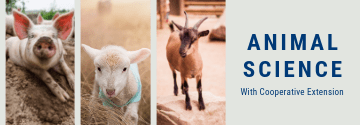Why do cows fail to get pregnant when you do everything right? Having a healthy cycling cow in heat, bred by an experienced technician is not enough to ensure a viable pregnancy. There are two crucial things that must occur prior to breeding for any real chance of producing an embryo that will survive to term.
High Progesterone
The first essential item for a lasting pregnancy is high progesterone. Not the progesterone needed to sustain the pregnancy once it has been created, but progesterone prior to fertilization. Numerous studies eshow for the developing oocyte to be able to fertilize and make an embryo that will survive to term, it must grow under high progesterone during its last days prior to ovulation.
The second critical factor to producing a viable pregnancy is to ovulate a follicle that is not too old and degenerate or too young and immature. To make an embryo that is the strongest and survives the best, we must breed a fresh, competent oocyte (the unfertilized egg, which is released from the follicle), and this is often a problem for lactating dairy cows. There are a high percentage of natural heats that ovulate aged dominant follicles. These cows often appear as strong heats, have great mucous and uterine tone, but the oocyte is aged. Most of these aged oocytes will fertilize, but they make small weak embryos that do not survive well.
Both follicle competency and adequate progesterone during its development are essential for maximizing fertility. It is the reason some dairies are attaining conception rates exceeding 60% using first-service synchronization programs such as the G6G or the Double Ovsynch. Interestingly, when you look at the last three injections in these two popular programs, it’s still the original Ovsynch program that finishes them.
Enhance Survival
The only difference in these programs is the shots that precede the Ovsynch. Those are meant to synchronize cows at around days five to eight of their cycle. At this time most lactating cows have a next follicular wave large enough to ovulate, and the first GnRH injection of the Ovsynch is meant to get rid of older, less fertile follicles/oocytes.
Starting cows around days five to eight of their cycle results in higher ovulation rates. By removing the dominant follicle and its hormones, we start a new follicular wave that will ovulate a fresh oocyte, making an embryo that has the best chance of surviving. Another benefit of starting cows in Ovsynch at that time is most cows will have an active corpus luteum (CL) producing enough progesterone to grow a fertile follicle/oocyte.
These first service programs attain amazing conception rates, but what about the cows that do not conceive? How do we resynchronize them if we fail to observe a standing heat or our conception rates are too low with natural heats?
In subsequent articles I will discuss the challenge in managing these cows reproductively and some strategies to apply to achieve higher conception rates.


